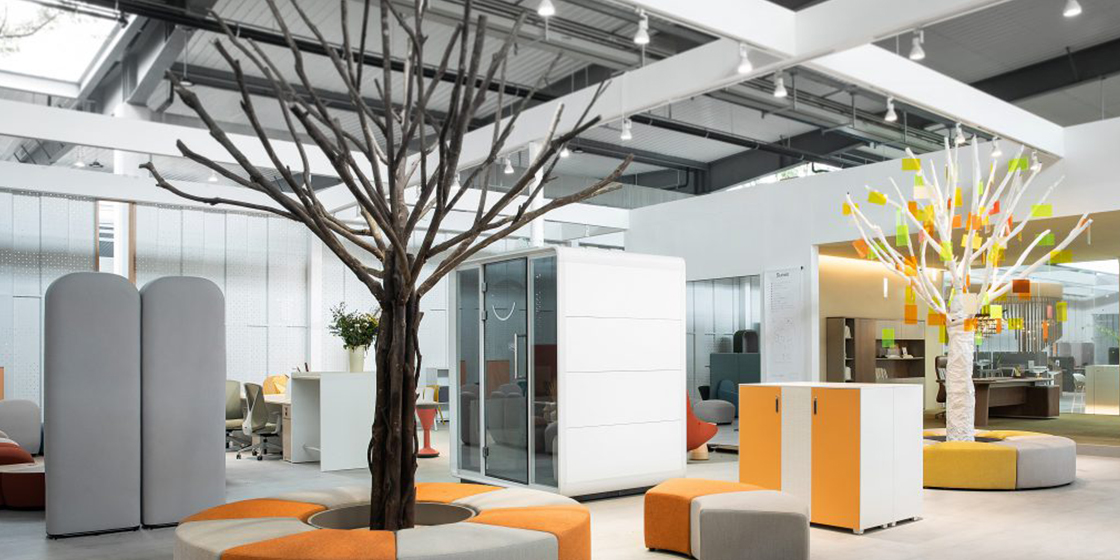
Our senses determine our experiences and feelings towards our environment. Whenever we enter a space, a rush of information is delivered to our brain through our senses. Our brains interpret its quality based on how it looks, feels, and smells; what we hear; and whatever we might taste. In addition to interpreting each sense, our brains also combine them into a multisensory experience that elicits human emotions. These inputs also work to influence our mood, our behavior, and ultimately our well-being in any given space, which is why this design concept is important for a Post-COVID office.
Around the world, companies are preparing to bring employees back into the workplace. As people head back to the office, some are feeling heightened levels of stress and anxiety. While some people will happily return to the workplace, some people will be forever changed by the pandemic. Returning to the office can potentially be a source of stress and anxiety, which is why it's important that companies take steps to address those issues. Employees who feel safe and are stress-free can be productive at work.
Check out our article on Employee Mental Wellbeing.
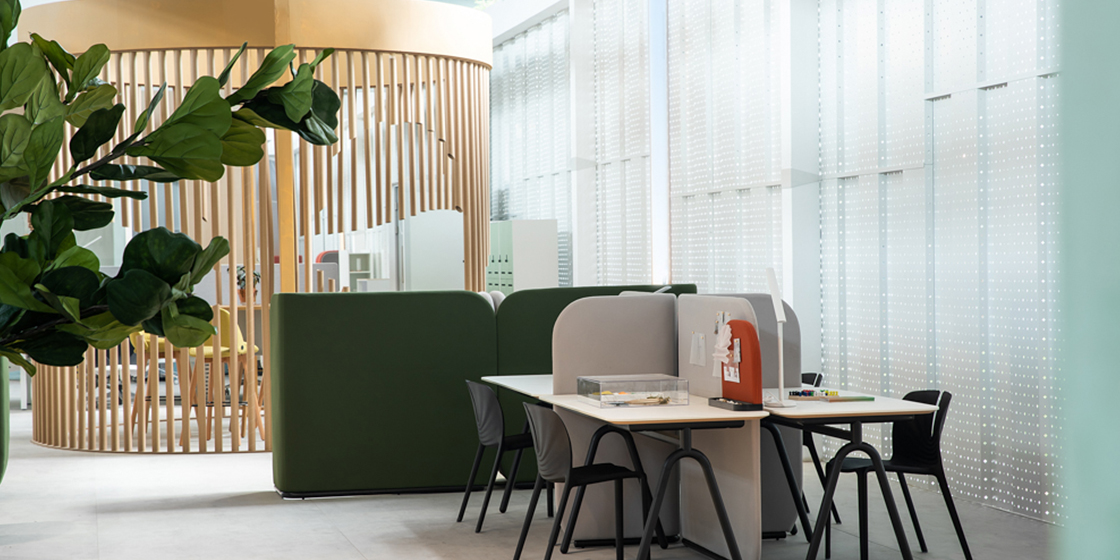
Organizations should look to workplace design elements to help ensure that people feel comfortable and safe once they walk into the workplace. By embracing a multisensory approach to workplace design, organizations can help people feel more relaxed in their surroundings. This design approach shows how people react to their surroundings, which is often triggered by their senses and how they can feel relaxed and peaceful.
What is Multi-sensory Office Design?
A multisensory office design approach is based around the concept that our perceptions are built on multiple senses, and people will react and experience the material environment in a number of different ways. For example, we may overlook senses like smell and taste, in favor of sight, sound, and touch when thinking about redesigning an office's interior. Typically, in order to create a high-performing, inspiring place to work, office designers would focus their efforts largely on the aesthetics of a building; what it looks like, and how this will affect the people in it, with much less attention paid to the remaining four senses.
In reality, every environment that we're present in will make use of all our senses and it's only when they're all satisfied, that we feel satisfied and comfortable – helping to increase our happiness at work. By paying attention to the different aspects of the multisensory design can we make the office a calmer space, as well as increasing their mental and physical well-being.
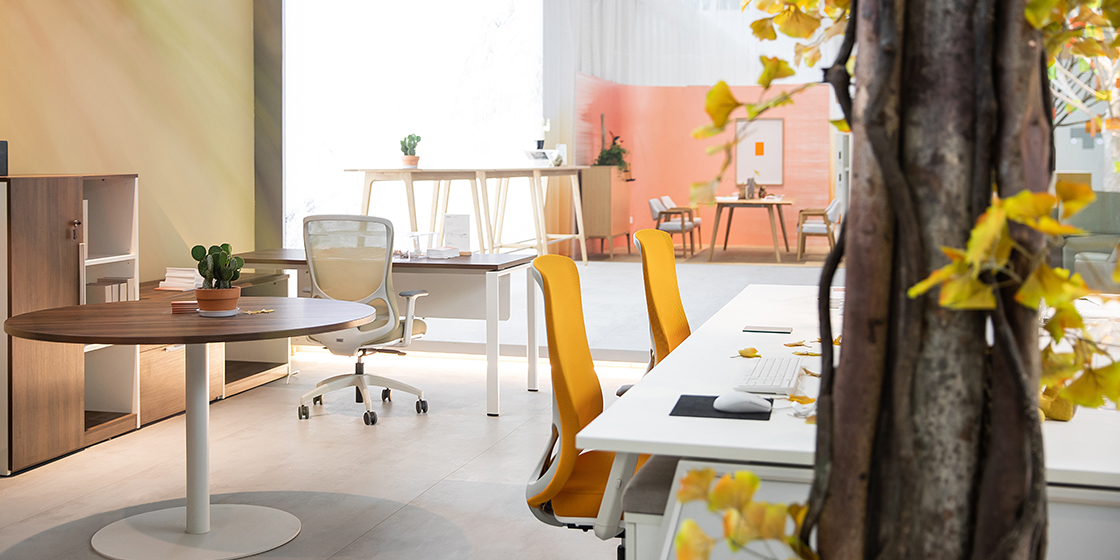
Featured products: Mall office system, Chair: Alien
The 5 aspects of Multi-sensory design
The five basic senses create a simple framework for increasing our attention to multisensory design features. Here's a deeper dive into the range of inputs our five senses perceive, and some of the many multisensory options designers can consider increasing wellness in the workplace.
Sight
Considered as the paramount sense when it comes to understanding the design of an office, sight relays the information that is presented by the makeup of office space, as the environment it offers can be summed upon first glance. The research behind the psychology of color suggests that color schemes alone can have a tremendous influence on mood, productivity, and even physical health and well-being. E.g. Red stimulates us; green re-energizes us, and blue calms us.
Learn more about Color psychology.
In addition to color, lighting is equally important when appealing to the senses. Providing employees and guests access to natural light and biophilic design is imperative for a healthy multisensory workspace, as they appeal to our innate attractions to nature and help us maintain consistent circadian rhythms (linked to psychological and physiological health). The colors of surfaces and objects can also have a significant effect on occupant performance, satisfaction, comfort, and health: warm-toned, natural materials like wood spark positive biophilic effects.
Learn more about Biophilic office design.
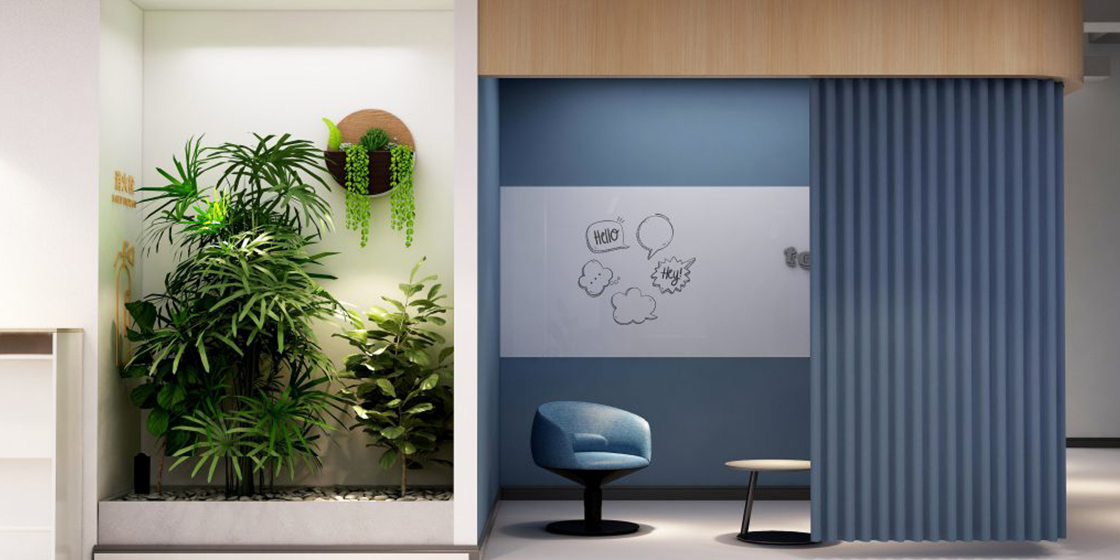
Featured product: UY lounge seating
Smell
One of the most powerful senses when designing for an office – yet it is often one of the most neglected. Not only is smell the closest sense linked to memory, but it is also responsible for up to 75% of the emotions we generate on a daily basis. That's why retail and hospitality environments have long used signature scents to create memorable multisensory experiences for their customers.
In the workplace, aromatherapy can be used to stimulate or create a sense of calm. Depending on your workspace layout, you can use specific scents throughout different areas. If you have a break room where people can go to relax, consider using lavender or sandalwood. If you have a brainstorming area where you want to encourage people to focus and be creative you can use jasmine or peppermint.
Touch
Whilst an office can look good it is important that it also feels good in order to truly engage your workforce. Our sense of touch can be appealed to through the use of varying textures and surfaces. Beyond a visually aesthetic appeal, carefully selected textures, surfaces, and materials can help promote comfort and encourage occupants to interact with their surroundings. Softer materials are more calming and inviting, while hard, sleek surfaces are seen as cold and sterile. Choosing natural materials for furniture and decor when possible (such as fabric versus plastic) can make for a more calming space.
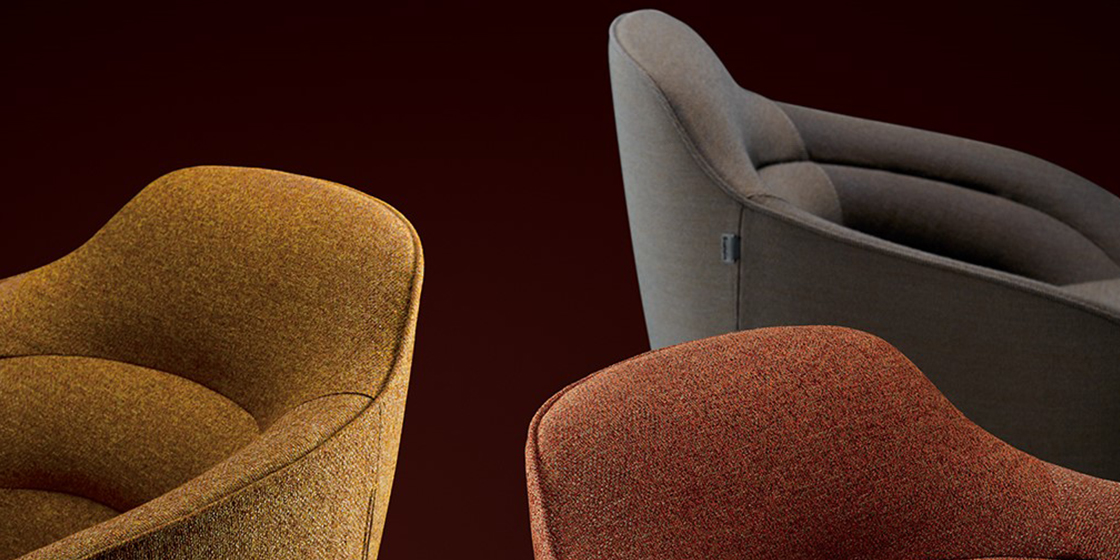
D3 series of sofa with Danish Wool
Taste
Not something that automatically springs to mind when considering the design of your office but nonetheless, food and drink can play a vital part in creating a sense of community within the workplace. By incorporating a cafeteria, occupants are encouraged to take small breaks throughout the day and recharge their creativity, concentration, and overall levels of productivity. Not only is creating an area for people to take a break helpful for health reasons, but it can also increase collaboration between co-workers as they are able to have informal meetings away from their workstations.
Sound
Sound is probably the most considered sensory experience in the workplace after sight. With the rise of collaborative and open office spaces, it is critical that acoustic privacy and comfort be taken into account when creating a balanced layout of focus and collaborative zones, quiet spaces, and third spaces.
Learn more about Acoustics in the workplace.
On the other hand, sound can also be used positively in the workplace; for example, playing music in communal areas such as a breakout area, cafeteria, or restrooms. Nature sounds are relaxing and create tranquillity. As you welcome people back into the workplace, think of ways in which you can incorporate relaxing sounds into your built environment.
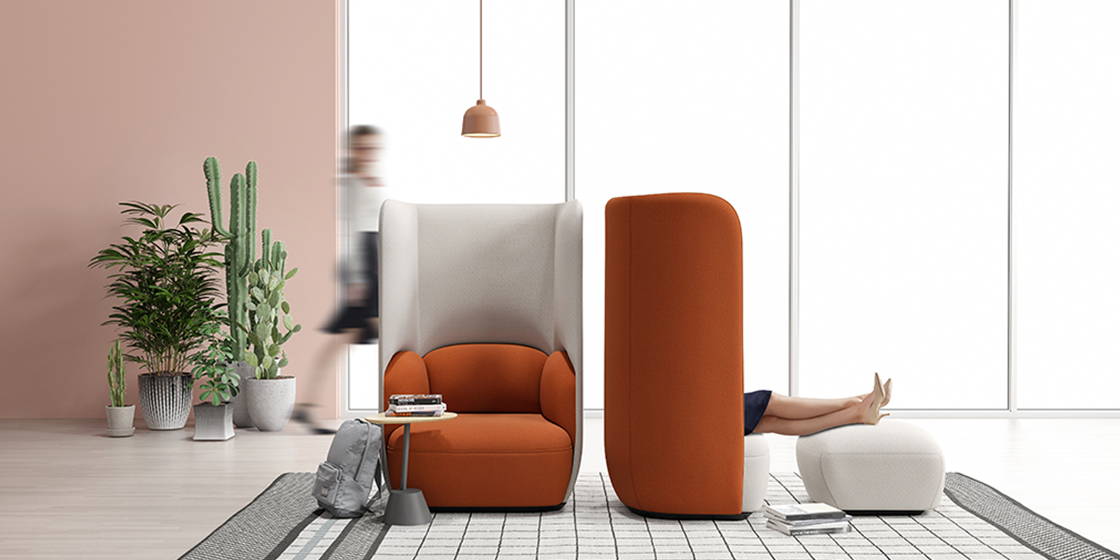
D1 series for privacy and acoustics
Why is Multi-sensory office design important now?
While many guidelines and protocols are focusing on the safety of employees and reducing any potential exposure to the virus, it's also important that leaders take some time to consider how returning to the office will impact workers' mental health. It is important to include workplace design elements to help ensure that people feel comfortable and safe once they walk into the workplace.
Paying attention to the multisensory aspects of the design can make it a less stressful place and increase productivity, as well as physical and mental well-being. Multisensory design, if it is used thoughtfully, can dramatically increase the desirability of the workplace. Employees who feel comfortable, healthy, and connected in their workplace will feel safer coming to the office. Healthier employees are likely to experience less stress in the office, take fewer sick days, and generally feel better, both physically and mentally.
